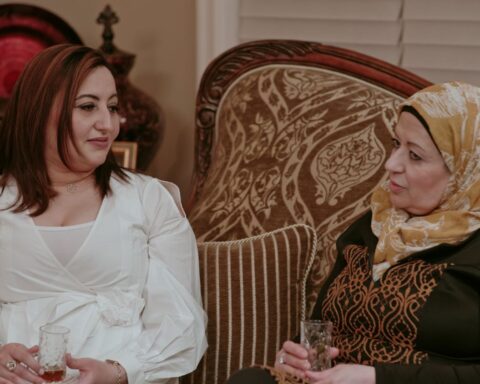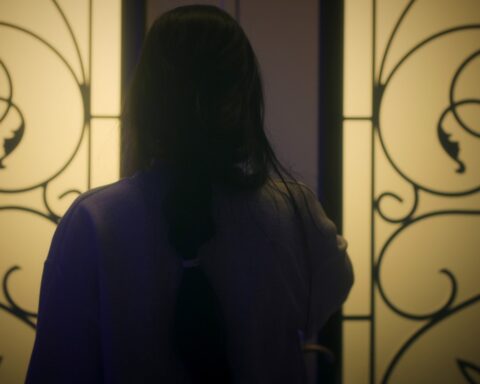USA, 84 min.
Directed by Laurie Kahn
International Premiere
A light, bubbly, unwaveringly feel-good doc, Laurie Kahn’s Love Between the Covers plays as a celebration of the often-maligned world of romance fiction. Kahn, best known for the 2004 film Tupperware, told a Hot Docs Q & A that she’s long been fascinated by women’s activities that don’t get much respect. In her new film, she aims at dispelling nasty stereotypes about the books with cover art featuring yearning women embracing muscular yet sensitive hunks.
After a witty credit sequence playing with that cover imagery, one of the film’s first revelations is that romance writers cannot be pigeonholed as faceless, soulless hacks word counting every paragraph. Patricia Highsmith wrote love stories under a pseudonym. Lenora Barot, who writes under the names Radclyffe and L.L. Raand, was a successful plastic surgeon before she hit it big with her tales of lesbian love. Like many of the women in the field, she has entrepreneurial drive and runs a publishing house she founded.
The film goes on to foreground intriguing star authors like Eloisa James, a Harvard educated, Fordham University English professor. James was born Mary Bly, the daughter of poet Robert Bly whose tome Iron John: A Book about Men, not to mention his chest-thumping forays into the bush, “mythopoetically” asserted primal masculinity. For some reason, Kahn doesn’t pick up on the obvious irony. But she does report that Robert, and “Eloisa’s” mother, writer Carol Bly, thought their daughter was nuts when she started coming up with works in the romance genre.
Along the way, Kahn’s film traces archetypes of romantic love in classic art and literature, work that intellectuals venerate. Who would accuse Romeo and Juliet of being sentimental claptrap? Women in the film laughingly argue that bodice-rippers and other sub-genres of pop romance annoy the literary world with an obligatory convention: the “H.E.A.,” or “Happily Ever After” ending. One interviewee suggests that Hemingway is not considered formulaic even though all his stories end the same way, unhappily.
For Kahn and her subjects, the H.E.A. is actually an affirmation of women’s desires and sexuality, an expression of “dreams, desires, and hope,” rather than a sugarcoated affront to the fictional depiction of human experience. The argument continues that critics detest the wildly moneymaking stories about love’s ups and downs because they are snobs who fear female sexuality.
A billion-dollar enterprise reaching millions of readers, the romance fiction pumps up an endangered publishing industry while continually experimenting with digital delivery, self-publishing, and modes of interacting with readers. The women in Kahn’s doc see their world as a widespread community with loving values. The staggeringly prolific writers create titles in numerous sub-genres from lesbian to historical, vampire and time travel to BDSM. Many prefer to go independent rather have their identities smothered by corporate Big Sister Harlequin.
One celebrated author, Beverly Jenkins, writes historical romance stories about African-Americans. The funny and charismatic Jenkins is a rarity. As the film depicts the writers, their backstories, writing processes, and marketing strategies, almost all the women in view are white and seemingly middle-class. Kahn’s movie never asks why, sidestepping the issue by highlighting Jenkins, who is a very engaging character.
Moreover, the film’s assertions that critics knock the genre strictly because they are afraid of female passion, and resent women asserting their creative identity, are somewhat disingenuous. While romance fiction is widely studied by various kinds of academics, the thrust of much criticism has always been about mechanistic, cliché-ridden, over-simplifying storytelling, the same criticisms leveled against mediocre crime fiction, sci-fi, and westerns.
Whatever the film avoids saying or doesn’t want to say about these love stories, Kahn clearly expresses her affection for the enterprising women who create it. The production displays great care and attention to detail. Love Between the Covers is a slickly-produced, entertaining doc.









